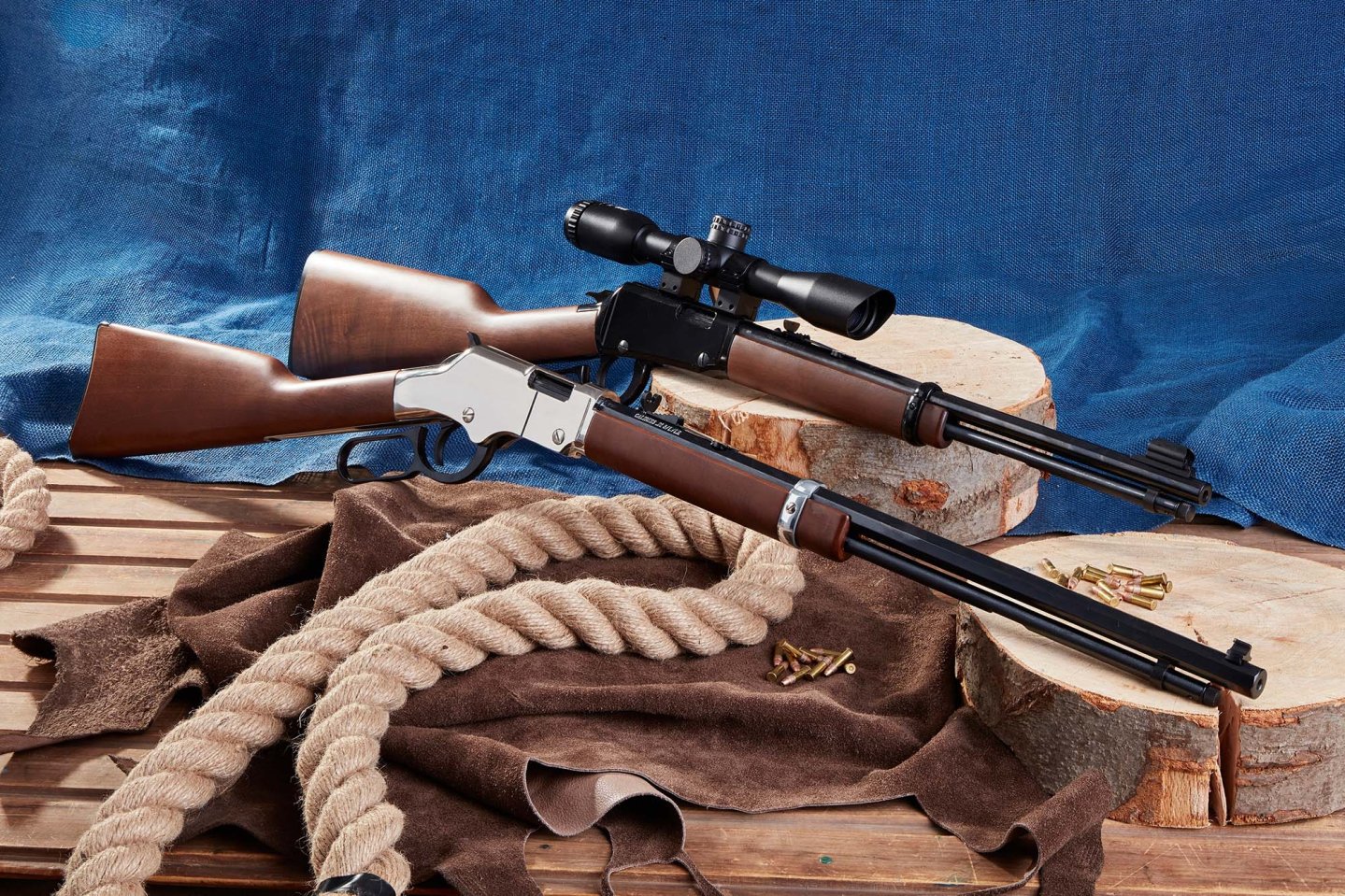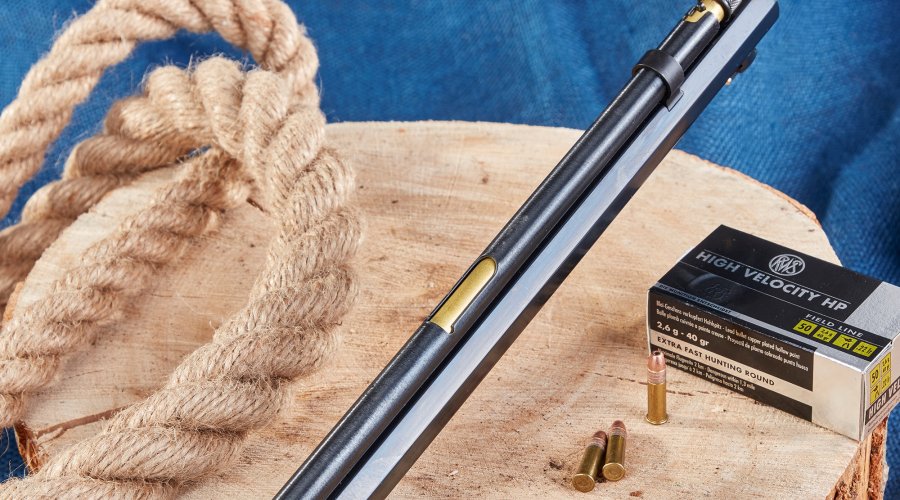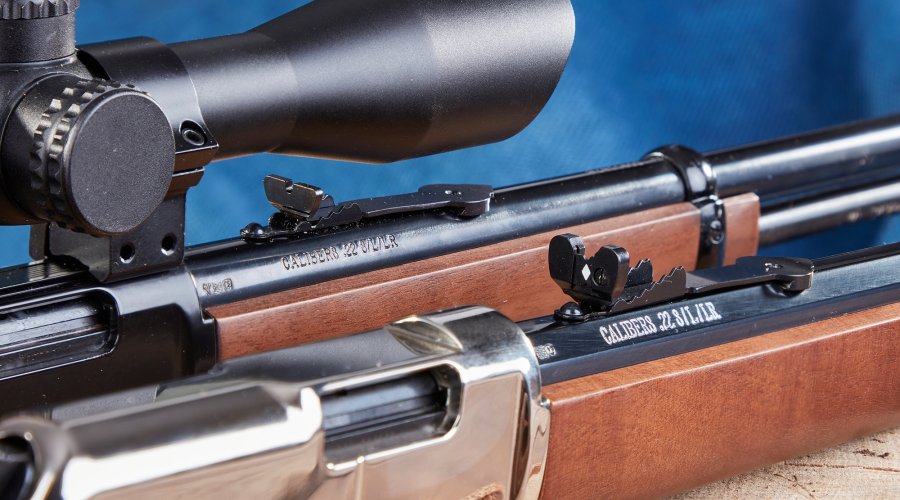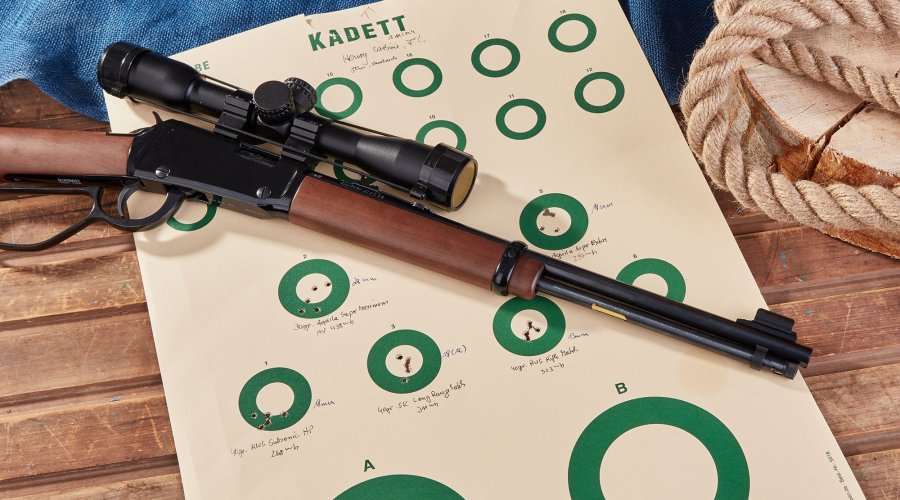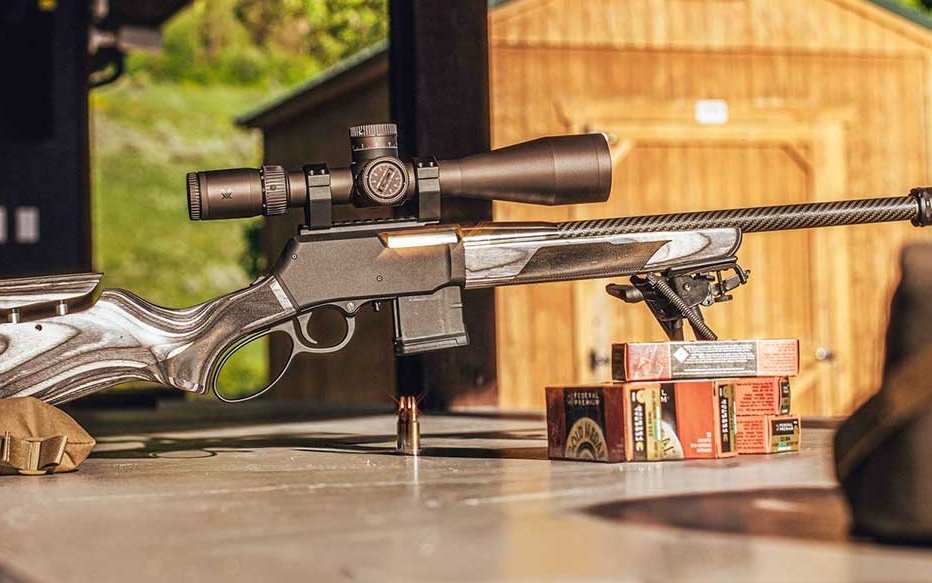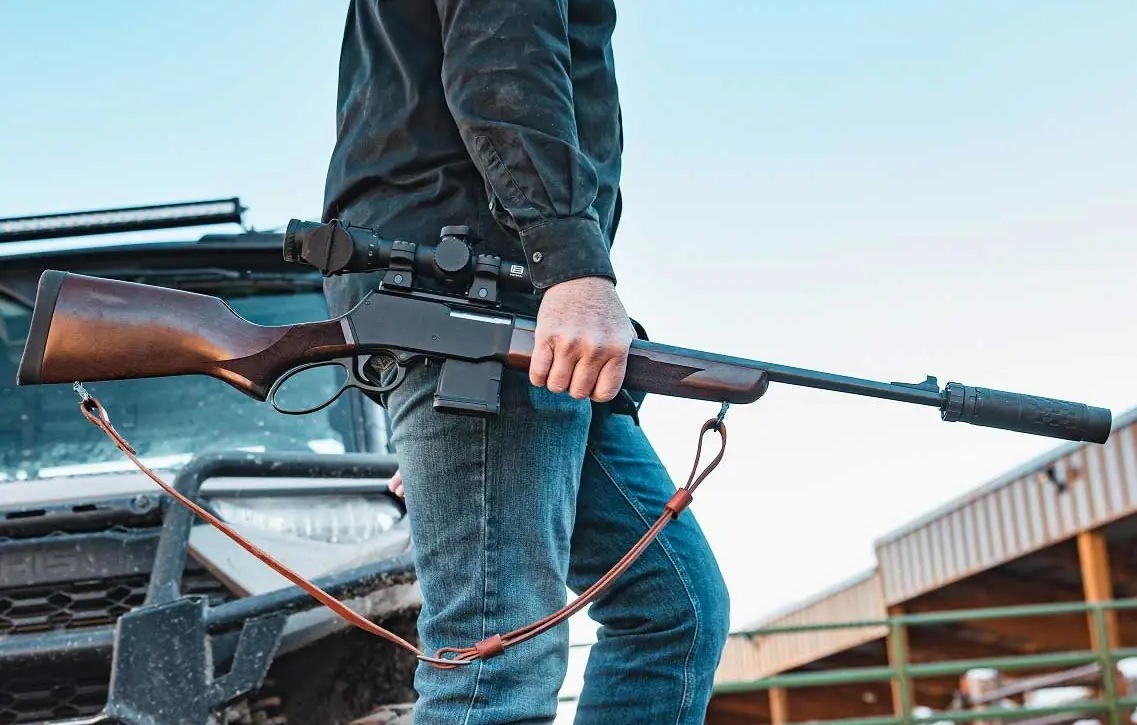It is always impressive how narrow the receiver of lever-action rifles can be. The Henry Carbine is just under 25 millimetres. The attribute "dainty" is the best way to describe this small gun. The slightly longer Henry rifle, officially called the Golden Boy Silver Rifle, is three millimeters wider at the receiver and is a good ten centimeters longer than the Carbine. However, it is more the features such as the octagonal barrel, the classic buckhorn rear sight in combination with the brass bead front sight and, above all, the mirror-bright nickel-plated receiver as well as the fittings that give the impression of a typical "Wild West gun". In contrast, the carbine looks rather sober and functional.
Long or shorter? The two Henry lever-actions in detail
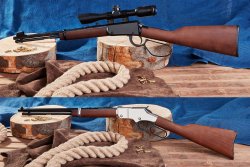
My first impression of the action was extremely positive: it works absolutely smoothly and evenly. Well, .22 LR cartridges run much smoother than the .30-30 Winchester, which is more typical for these rifles. However, .22 rounds also weigh very little and are much shorter. But the smooth action of the lever and bolt is also impressive, no hesitation or scratching disturbs the typical hand movement. "Buttery smooth" seems to be the best way to describe the action. There was some criticism from taller people when it came to shouldering: the distance from the centre of the trigger radius to the centre of the butt plate is a little short at around 35 centimetres. The loading method is the same for both Henrys. In front of the receiver, the inner magazine tube – a long rod with a spring – must be pulled out of the magazine tube; the cartridges are inserted through a port in the magazine tube with the bullet pointing in the direction of fire. After loading the rifle with 12 (carbine) or 16 cartridges, the inner magazine tube is inserted back into the magazine tube and locked.
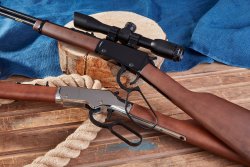
This means that the gun is ready to fire – after a single lever operation. At the same time, this also demonstrates the proximity to the manufacturer's name Henry: the original versions of this probably most American rifle were also loaded by inserting cartridges into the magazine tube. In other words, unlike the later more popular Winchester rifles with their loading gate on the receiver. The carbine can be fired both with open sights and, thanlks to the 11-mm prism rail, with a scope. The Silver rifle is not suitable for the elderly or those with poor eyesight – either the open sights can (still) be used or the rifle is better left with the dealer. The simple but subjectively harmonious wood quality of the stock, which the manufacturer identifies as "American Walnut", is the same for both. The fit to the metal is, well, there... However, the prices set at $730 and $457 respectively (US MRSPs) can be regarded as relatively favourable.
On the shooting range: Henry's rimfire lever-action rifles were unimpressed by the variety of ammunition
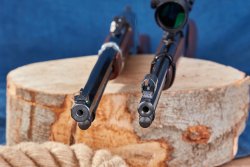
The Carbine version was used because of its significantly higher accuracy. A very simple riflescope, an Ares Arms 4x32 AE, found its place on the prism rail. These cheap optics, including rings, are available online for around 75 euros. At a range of up to 50 meters and under reasonable lighting conditions, such a simple scope is perfectly adequate. For how long, however, is another question that cannot be answered here. The question of ammunition sensitivities should be answered by the selection of test cartridges. From the "hyper" fast and light copper-plated Aguila bullet to the standard bullet weights and shapes to the slow subsonic bullet, the five loads sufficiently cover the range of possibilities. The fabulously good trigger characteristics of the carbine made it possible to punch surprisingly tight groups into the target.
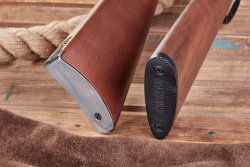
Thanks to the excellent characteristics of both rifles, the triggers definitely the "match" qualification. As it is hardly to be expected that the shooting performance of the longer rifle will be worse in theory, the test with open sights was dispensed with. Ultimately, the small cartridge also contributes to the good shooting performance despite the somewhat short buttstock. This is because the shooter can concentrate fully on the reticle and bend without any fear when shooting from a sitting position.
It's more like shooting fun. Well, you know what to expect in terms of accuracy from which load. But red PET bottle caps can also often be hit at 50 metres. And with every hit, they evoke a feeling that has been missing for a long time because it is almost dead due to over-regulation: the fun of shooting! And this also led to the realisation of how absolutely correct the general designation of these inexpensive rimfire rifles is in their country of origin: "Youth Rifle". And youth does not mean 15- or 16-year-olds who have been put through psychological meat grinders, but children aged 10 and under. In the game-rich regions of the USA, it is quite common for hunting parents to take their offspring hunting for deer from the age of 13 or 14. The young hunters then shoot with calibers such as the .30-30 or .308 Winchester, but have long since learned to aim and hit with .22s.
Henry Arms Silver Rifle and Carbine technical specifications and prices
Manufacturer: | Henry Repeating Arms |
Henry Repeating Arms
|
| Model: | Golden Boy Silver Rifle | Carbine |
Caliber: | .22 Long Rifle | .22 Long Rifle |
Capacity: | 16 rounds | 12 rounds |
Dimensions (LxWxH): | 980x38x140 mm | 875x38x150 mm |
Barrel Length: | 510 mm | 410 mm |
Sight Radius: | 430 mm | 320 mm |
Rear Sight: | Buckhorn | 2.1 mm approx. |
Front Sight Width: | 2.1 mm approx. | 2.0 mm approx. |
Trigger Pull Weight: | 1,300 g approx. | 1,300 g approx. |
Weight: | 2,350 g approx. | 2,000 g approx. |
| Price (MSRP in the US): | $730 | $457 |
| Features: front sight with brass bead, octagonal barrel, buckhorn rear sight, nickel-plated receiver, nickel-plated metal butt plate, walnut stock. |
Features: 11-mm prism rail, post front sight, U-notch rear sight, elevation adjustable in steps, large lever loop, plastic butt plate, walnut stock.
| |
Picture gallery: Silver Rifle and Carbine lever-action rifle from Henry Repeating Arms in shooting practice
Conclusion: how much shooting and technical fun do the Silver Rifle and Carbine from Henry Arms offer?
The two Henrys are inexpensive guns with very good mechanical and functional workmanship. Once again about the trigger characteristics: to top these, even more expensive makes usually need a trigger overhaul. Added to this is the inexpensive ammunition, which in case of doubt, or better still in windless conditions, is sufficient for successful shots up to 100 metres. And there is an abundance of disciplines from the umbrella organisations that exist explicitly for lever-action rifles. Whether the decision is made in favour of a more classic or practical look is left to the taste – or the eyes – of the buyer. We give both Henrys a clear recommendation to buy.


